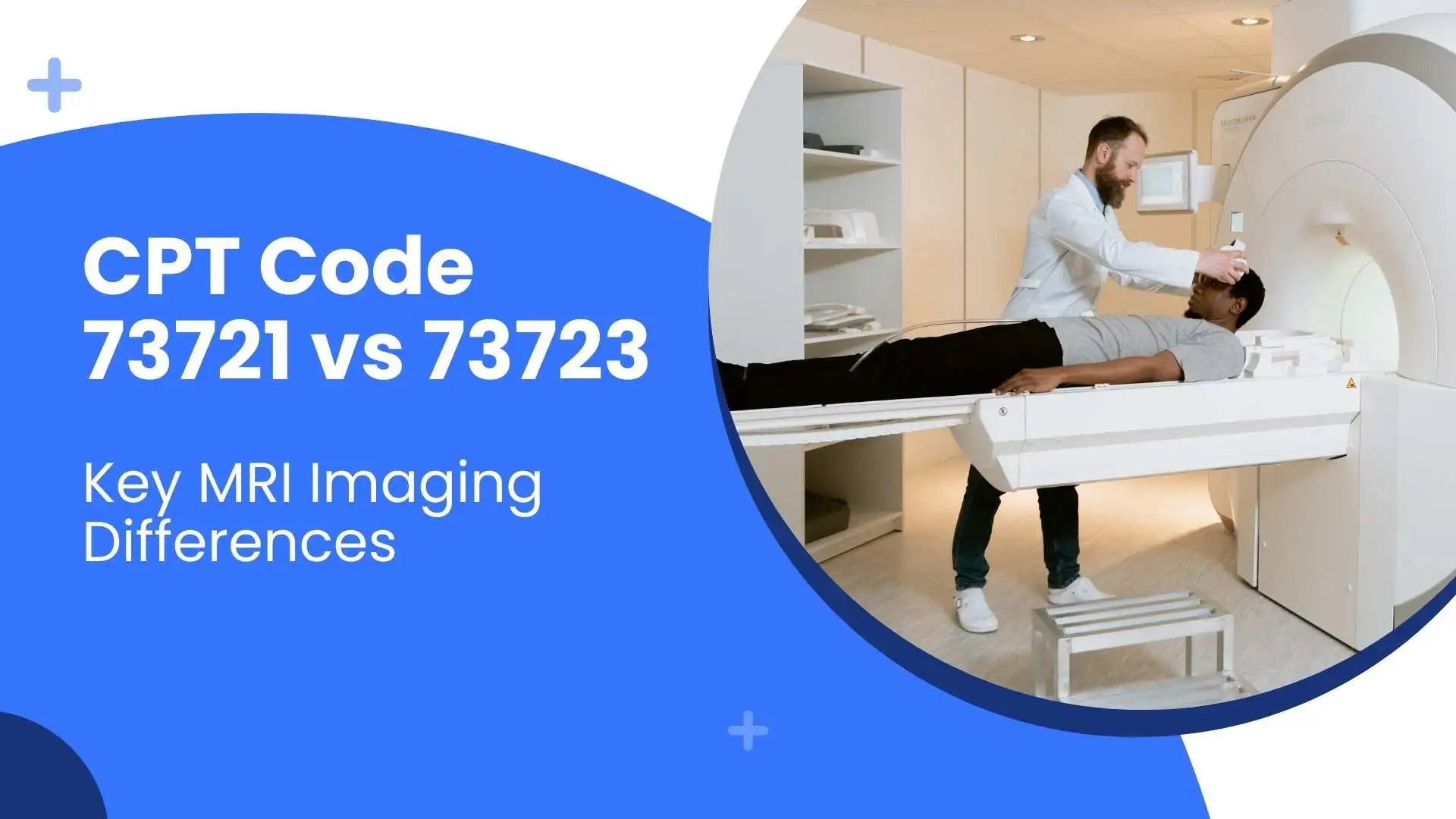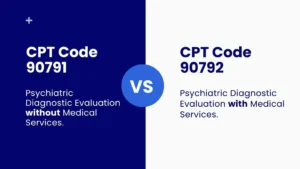Understanding medical codification is often considered difficult, especially while dealing with imaging procedures and their respective CPT codes. Out of all MRI studies concerning the lower extremities, two codes seem to grab attention the most: CPT code 73721 and CPT 73723. These healthcare codes are of utmost importance to professionals dealing with coding, billing, and even patient care.
Decoding CPT 73721 and CPT 73723
It is highly important to explain what these codes depict before interpreting them.
This code is often used in the denominator of the knee MRI performed without contrast material. This code is often used while diagnosing various conditions like ligament tears, cartilage injury, and other knee pathologies in the absence of contrast material in MR imaging.
On the contrary, the 73723 CPT code is used for MRI of the knee with contrast material. This method has specific advantages, especially when extreme detail is required for assessment of very complex conditions, which tend to be concealed in the absence of contrast.
Accuracy in healthcare is important during almost every procedure and process. The selection of the best fitting code guarantees not only accurate billing, but also effective care and information for the patient, in addition to the nursing and medicine staff’s trust to the medic.
Proper Application of CPT 73721
Proper usage of CPT code 73721 pertains to cases when the physician reasons that an ordinary injury may be present, which does not need the added imaging details given by contrast. For example, in a case in which a patient presents with knee pain after an injury, the physician is likely to do an MRI without contrast to assess for tears in the meniscus or other relevant injuries.
In cases like these, where a patient is an athlete who attends to or develops pain sometime after a sporting match, the physician can request an MRI with a 73721 CPT code for assessment of the knee region without adding the complexity of further contrast.
Appropriation of CPT 73723
Other than the prior example, CPT code 73723 is more applicable when the physician has reason to believe the use of contrast will aid in illustrating the problem that accompanies the anatomy of interest. This is especially critical about patients who have had previous knee surgery, along with other patients demonstrating signs that suggest more complex and advanced pathologies, like, but not limited to, tumors, infections, or vascular lesions.
For instance, a patient with a surgical history of the knees may show debilitating pain and marked heating of the affected knee. If an MRI is performed, he is likely to show no perceivable signs, at least none of major significance. The physician in question is likely to recommend an MRI with contrast and charge it to CPT 73723. This approach enables thorough evaluation for other possible factors aggravating the patient’s condition.
Main Distinctions Between the Codes
The principal difference, or rather distinction, separating CPT 73721 from CPT 73723 lies in the clinical rationale for performing the imaging, as well as the intended outcome of the imaging. If the imaging is seen very likely to be diagnostic in itself, then the code for 73721 CPT code should be applied. If, on the other hand, additional details are needed, the correct option will then be CPT 73723.
While this article focuses on imaging CPT codes, it’s equally important to understand the distinctions in lab testing. For instance, see our breakdown of CPT Code 80053 vs 80048 to learn how to code basic metabolic and comprehensive metabolic panels correctly.
Common Missteps in Coding
Even the best of us can make oversights when coding these procedures. These oversights include the following:
· Always Counting on Contrast: In certain instances, contrast material may not be needed. There must be a clinical justification for using CPT code 73723.
· Ignoring Justification: A physician who schedules an MRI needs to provide relevant medical justification in the documentation. Without appropriate documents, insurers will refuse to reimburse claims.
· Similar Codes Confusion: A mix-up of codes with similar numbering is an all too familiar story. There must be extra care to verify cases if coding errors are to be avoided.
The Role of Imaging for a Patient’s Care
Knowing to how implement CPT code 73721 and CPT 73723 codes go beyond proper billing. Impressions are of utmost importance in the caring of a patient. The proper selection of codes defines the value of care that would be provided, hence is pivotal in ensuring the satisfaction of the patient’s health needs.
Suppose in the chronic knee pain context, an MRI with MRI knee CPT code 73721 is performed. Results from such an examination will indicate some issue, however, contrast imaging will reveal CPT 73723, which will further complicate the voyaging undertaking these services require. Proper coding aids in the overall healthcare delivery system for the patient.
Suggestions on How to Do Coding Correctly
· These suggestions ensure the accuracy of these codes for MRI:
· Keep updated: The realm of coding is not static; therefore, appropriate practice policies have to remain up to date for CPT code 73721, CPT 73723, and other coding.
· Consult with Doctors: If one question requires contrast, contact the physician’s care and proceed with him or her. This will provide valid reasoning on the matter.
· Explore different reading materials: Coding books and other online resources have been vital in dealing with inaccuracies.
· Double Check Documentation: Ensuring that the clinical documentation checks out with the procedures performed before coding is critical in maintaining accuracy.
· Learn from Experience: Errors should be embraced as an educational experience. Conducting a post-mortem, identifying what went wrong, and implementing learned lessons will improve error coding in the future.
Conclusion
As stated, the correct usage of both 73721 CPT code and CPT 73723 is of paramount importance for professionals involved in imaging casting, which involves imaging procedures. The difference between these codes goes beyond reimbursement; it directly influences the quality of patient care and treatment results. Coding with the utmost precision, professionals will find ways to work through these codes and, in doing so, improve the precision of the allied health services system.
Bonus Tip: Partner With a Great Billing Company
A good billing company saves you the stress of dealing with misplaced codes. A knowledgeable billing partner appreciates the finer details of procedures like MRIs with MRI knee CPT codes, identifies documentation mistakes before submission, and makes certain that you get paid for the work done.




